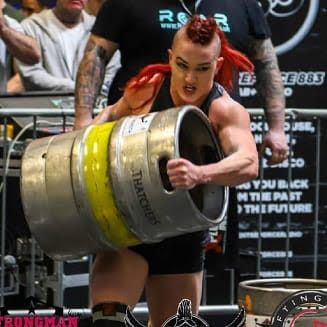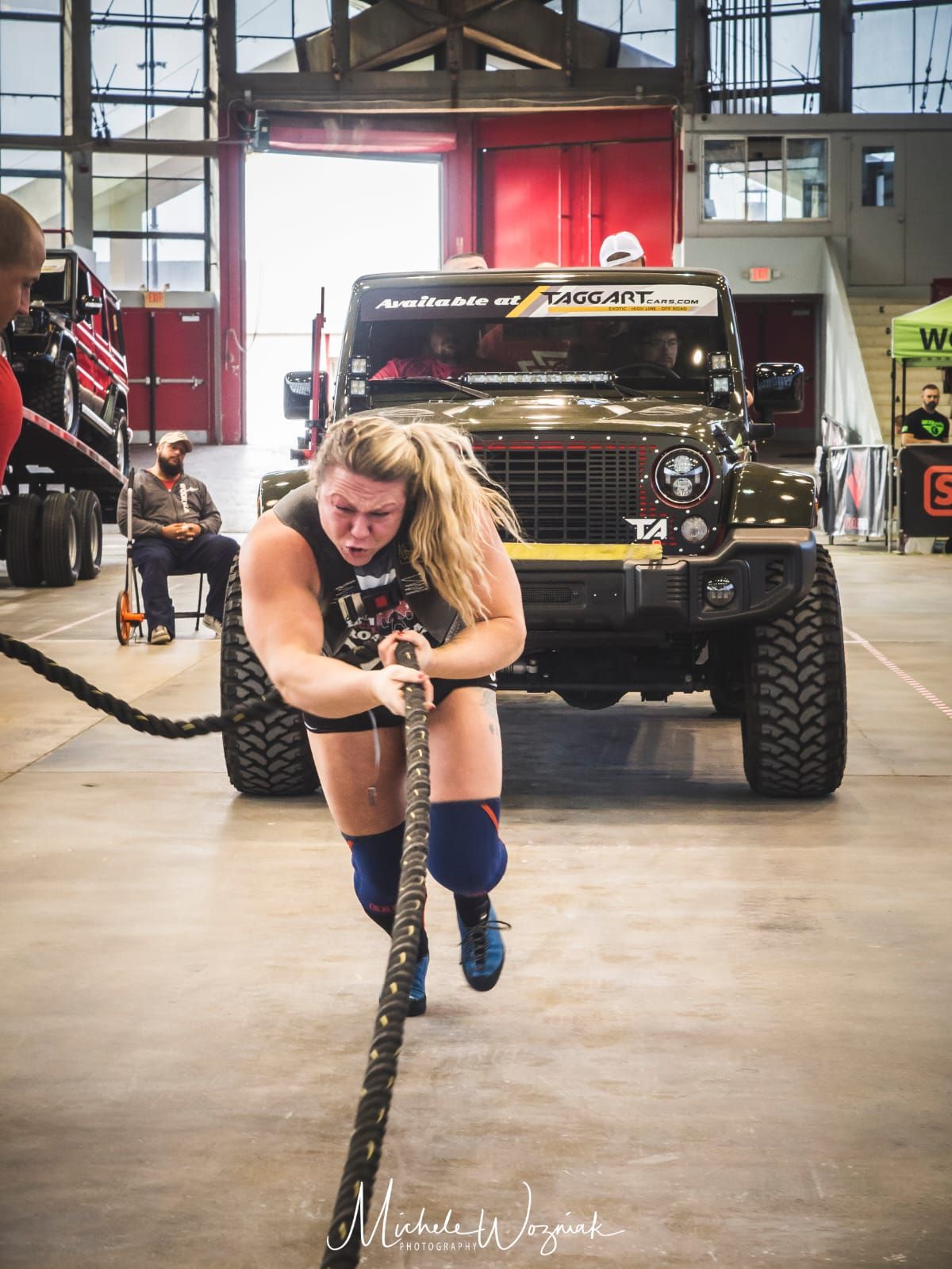“I’ve had my fair share of trolls – especially after the Eddie Hall video.”
At just 25-years-old, Rhianon Lovelace is pound-for-pound the strongest woman alive – but she only decided to prove it on the international stage because her partner dared her.
This weekend (August 21st-August 22nd) Lovelace, Donna Moore and Lucy Underdown will compete against 13 other women as they lift cars, pull trucks, and shift monstrous stones in Bangor, Northern Ireland to determine the UK’s Strongest Woman.
How the UK’s strongest women discovered the gym
“I was a powerlifter at a young age and just loved lifting weights,” Lovelace told JOE, before explaining she only started competing in strongwoman in 2016 after her partner, Luke Davies, a competitive strongman, dared her.
 Rhianon Lovelace is regarded as the pound-for-pound strongest woman on Earth.
Rhianon Lovelace is regarded as the pound-for-pound strongest woman on Earth.“I just fell in love with it. I was absolutely hooked. I entered a world’s qualifier in my first competition and won it.
“I then went over to the powerlifting stand and retired from powerlifting there and then.”
Despite the help and support from her partner, Lovelace insists there is still a domestic rivalry between the two when it comes to lifting.
Laughing, she said: “If he’s injured, I’ll be lifting a little bit more and there’ll be a bit of banter back and forth. There’s definitely a rivalry. It keeps it fun.”
For Donna Moore, her journey from the gym to the strongwoman summit was a quick one. She only began pumping iron in 2012, the same year she competed in her first event.
“I’d joined a regular gym and started going to classes like body pump just to lose weight and be more happy and confident in myself,” Moore explained.
“My confidence grew, I joined other gyms and then got invited to a strongwoman competition back in 2012.”
 Donna Moore pulls trucks for fun.
Donna Moore pulls trucks for fun.Balancing training with work
Lucy Underdown is a force to be reckoned with on and off the circuit – her day job is being a police officer.
Speaking to JOE from her police car while on a break, Underdown said: “I used to work more shifts, but now I’ve changed my role so that I can fit my training in.”
Moore has to balance her training alongside a job in the NHS and being a mother to two teenagers.
“They’ve been there since they were small, freezing to death and wanting to go home. But to me and to them, it’s just me doing what I like.”
Just how strong are Britain’s strongest women?
The UK’s strongest women boast weightlifting records that far surpass the majority of male gym-goers.
Lovelace, the pound-for-pound strongest woman alive, was the first British woman in history to squat three times her bodyweight.
And Underdown holds the women’s world deadlift record at 300 kilograms. She was cheered on by over four thousand people at Stadium MK when she broke the previous record on May 31st, 2021.
Moore has pulled trucks for fun and made atlas stones weighing over 150 kilograms look like tiny medicine balls.
All three women have benefitted from going up against some of the world’s strongest men in the gym.
Both Lovelace and Moore have trained with 2017 World’s Strongest Man Eddie Hall, who they said is “lovely” and “the only one to take the sport of strongman into the mainstream.”
Underdown belongs to the same gym as former Britain’s Strongest Man, Terry Hollands, who urged her to compete from the very beginning.
Despite their success, all three women have experienced varying degrees of abuse online.
Coping with trolls on social media
“I’ve had my fair share of trolls,” said Lovelace, “especially after the Eddie Hall video.”
She went up against Hall in a series of bench press, squat and deadlift challenges but trolls on social media referred to her as “rude” and “obnoxious” in the comments section.
“The comments on YouTube for a lot of women can be a pretty horrific place to be,” added Moore.
While they laugh off the majority of comments, some messages received by the UK’s strongest women can be more sinister in nature.
“I’ve had death threats and threats to my family,” explained Lovelace.
“But then I’ve also had all kinds of weird ones, like people wanting to buy my socks or wanting me to press them above my head for money.”
Moore remembered a specific example of trolling which still resonates strongly.
“There was a video of me carrying a strange contraption called a power pohl. It’s a really good posterior chain exercise.
“The comments were horrific… People saying ‘That’s a stupid exercise’ or being sexual about it.”
https://www.instagram.com/p/B1MxH2zgGWe/?hl=en
Former World’s Strongest Man Brian Shaw posted a video of himself using the same device, but Moore said the comments were nowhere near as scathing.
“Everyone was like, ‘I bet that’s a wonderful exercise!’ There was no, ‘Do you impale your boyfriend on that?”
Underdown said social media “can be a weird place”, adding “you get weird messages from men who either try and give training advice or make inappropriate comments.”
With many women feeling intimidated by the prospect of lifting weights due to this sort of behaviour, the advice from Britain’s strongest women is clear.
“Just remember who matters,” says Lovelace.
“If they don’t matter to you, don’t listen to their comments.”
https://www.instagram.com/p/CSZuQGYo8BQ/
Growing the sport of strongwoman
In order for strongwomen events to hit the heights of World’s Strongest Man, Lovelace believes competitions need to showcase a variety of female bodies.
“We need to show a range of strong women. I’m five foot and 60 kilos, but a lot of people think you have to be six foot plus – even as a woman.”
Underdown believes the sport of strongwoman needs to be given an equivalent platform, so its competitors can receive the same recognition as their male counterparts, like Eddie Hall, Brian Shaw and Hafthor Bjornsson.
“We need to be given the chance to compete on the same day as the guys and be able to put on a show like they do at World’s Strongest Man.”






































